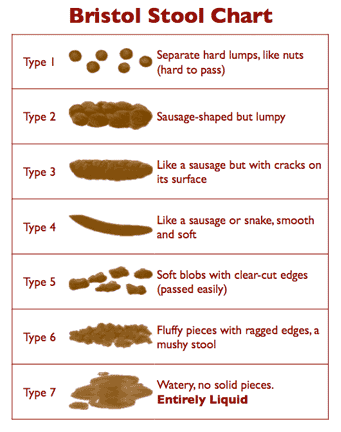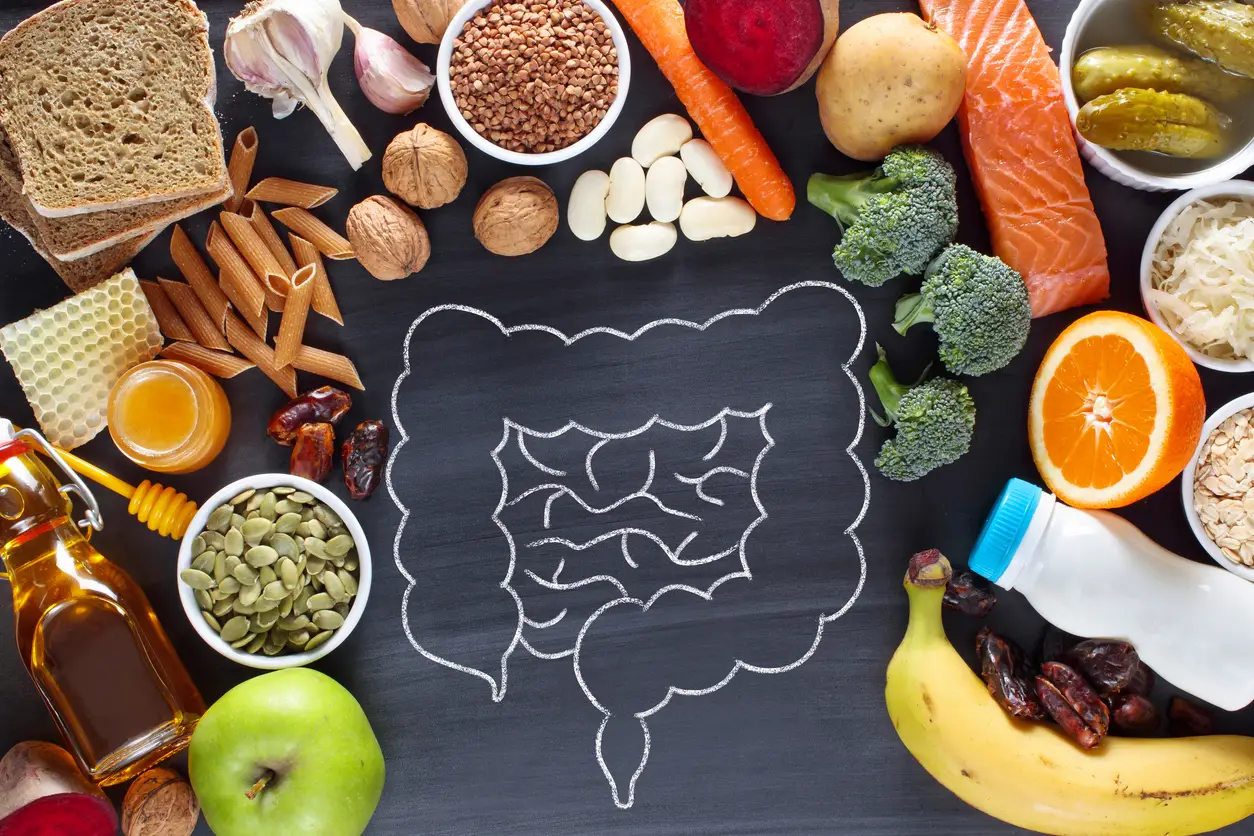Unless you’re the parent of a toddler who has just mastered “going potty,” poop is probably not a hot topic in your household. But the composition of what you deposit into the toilet has important implications for health.
Did you know the features of fecal matter—such as the size, color, shape, odor, and consistency indicate how well the gastrointestinal (GI) tract is functioning?
Those same features also provide clues about how your body is (or isn’t) faring against threats of infection and more serious diseases like celiac disease, hepatitis, urinary tract infections, malabsorption disorders, inflammatory bowel disease, pancreatitis, and cancer.
To give you an idea of what healthy, normal stool looks like, check out the Bristol Stool Chart.
The healthy range for fecal matter is of a consistency that is not too hard, not too soft, and mostly solid—as opposed to lumpy, pellet-like, or liquid.
Normal stool color is in the light-to-medium brown range and is not offensively odorous. Also, bowel movements (BMs) should pass easily from your body to the toilet.

5 Bowel Movements that Require Medical Attention
Unless you are aware of dietary changes or a medication that could produce the following types of stool, it’s advisable to seek medical attention if you observe the following changes in BMs.
- Stool that is hard to pass, requires straining, or is accompanied by abdominal pain.
- Black, tarry stool might indicate infection or GI bleeding, while bright red stool could indicate infection and/or bleeding in the GI tract or anus. Seek immediate medical attention.
- White, pale, or grey stool could indicate problems with the liver, bile ducts, or pancreas.
- Yellow stool could indicate serious infection or gallbladder problems.
- Mucus in the stool can indicate inflammation, infection, or even cancer.
How Often Should You Go?
How frequently you have a BM is important, too. What’s typical for you may be different for other people in your family. For most people, three weekly BMs are considered the norm. Aim for once a day, no matter how often you poop, you should not have to strain or experience pain while excreting. Additionally, be aware that the appearance and frequency of BMs will vary based on what’s in your diet, sleep and exercise patterns, hormonal changes, travel, stress, hydration level, medications or supplements you are taking, and exposure to toxins (from nicotine to industrial toxins).
How Low Should You Go?
There’s also evidence that the position you take to evacuate the bowels has health implications for the physical structures of the GI tract. So much so that some scientists indicate sitting to poop is a contributing factor in the development of colon and pelvic diseases.
Before potty training, young children squat to poop in their diapers—they don’t sit. Yes, there’s a difference between squatting and sitting. The modern toilet places the thighs at a 90-degree angle to the abdomen, whereas squatting has a much deeper angle that gives more motility to the intestinal muscles and organs.
Evacuating the bowels is much easier on the body in the squatting versus seated position. Toilet position should be a consideration for everyone over the age of five, but is especially important for the elderly, the disabled, and individuals with compromised mobility.
Don’t hesitate to take care of your gut and bowel health, contact us to schedule an appointment!
Resources
- Mercola, J. “What You See in the Toilet Can Give You Valuable Insights into Your Health.” Accessed February 2015.
- Monastyrsky, K. “Gut Sense: What Exactly Are Normal Stools?” Accessed February 2015.
- Sikirov, D. “Comparison of Straining During Defecation in Three Positions: Results and Implications for Human Health.” Abstract. Digestive Diseases and Sciences 48, no. 7 (July 2003): 1201-5.
- Step and Go. “Step and Go Ergonomically Correct Toilet Position.” Accessed February 2015.






